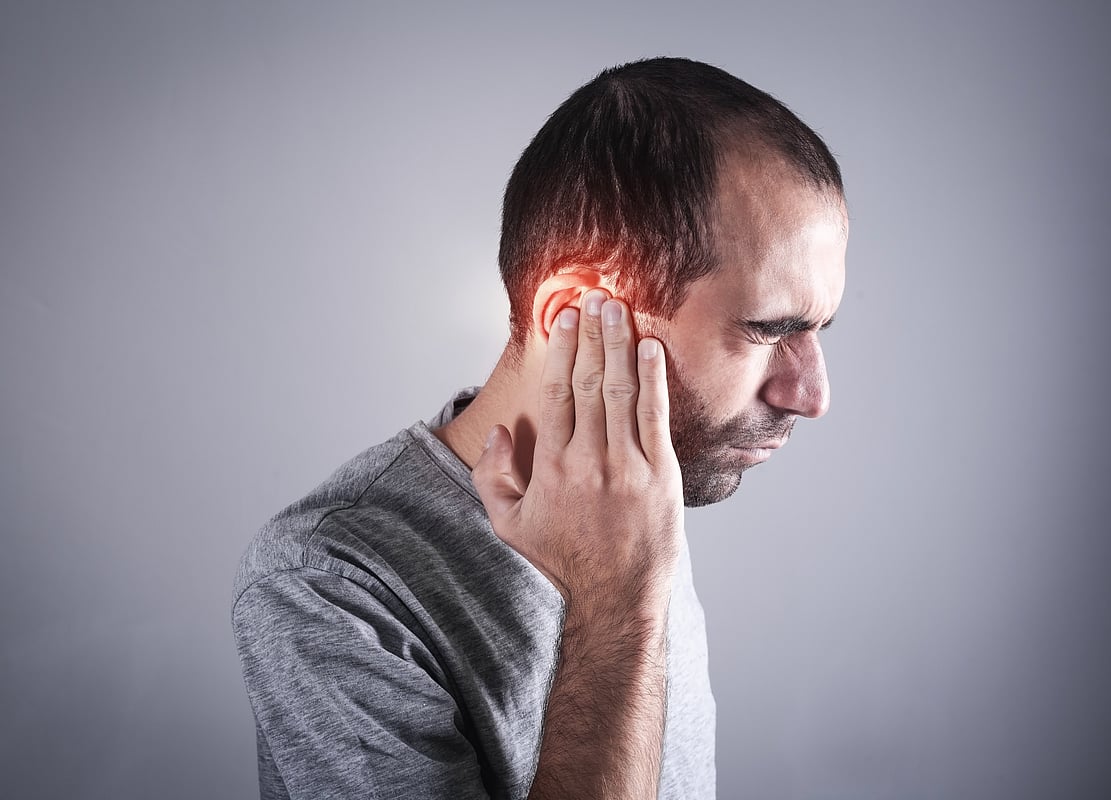Swimmer’s Ear: What It Is, Symptoms & Treatment

Otitis externa (OE), better known as swimmer's ear, is a painful inflammation of the ear canal.
The inflammation is usually caused by an infection from a bacteria or fungus causing narrowing of the ear canal and frequently leads to drainage from the ear. Sometimes that inflammation can become severe and may involve the outer ear. OE is typically treated with medicated drops and usually resolves within a few days. However, severe cases may take weeks to resolve and require oral antibiotics.
What is swimmer's ear?
OE is painful swelling and inflammation of the external auditory canal (commonly called the ear canal). There is frequently discharge or drainage from the ear. OE is most often caused by bacteria or fungus. The most common bacteria that cause OE are Pseudomonas aeruginosa or Staphylococcus aureus and the most common fungus that cause OE are Candida or Aspergillus. The ear canal becomes inflamed and swollen, trapping microbes and debris that can make the problem worse.
Swimmer's ear vs. ear infection: How to tell the difference
Swimmer’s ear is a swelling and inflammation of the ear canal. This leads to narrowing of the ear canal and frequently drainage and pain of the outer ear cartilage. A middle ear infection, or otitis media, is much more common than swimmer’s ear. An ear infection is caused by fluid and infection behind the ear drum (tympanic membrane). The ear drum is deep inside the ear canal. Sometimes an ear infection can lead to ear drainage and rarely swimmer’s ear. The only way to tell the difference between swimmer’s ear and ear infection is through careful examination of the outer ear, ear canal and ear drum by your health care provider.
What causes swimmer's ear?
No one knows exactly why some people get swimmer’s ear more often than others. However, there are some clear risk factors. The ear canal naturally contains ear wax (cerumen) which helps to keep the ear canal healthy. When the environment of the ear canal becomes disrupted, then swimmer’s ear can occur. Here are some risk factors that are associated with getting swimmer’s ear:
- Swimming
- Trauma to the ear canal from things like cotton swabs, earplugs or hearing aids
- Narrow ear canal
- Obstructed ear canal with wax impaction or a foreign body
- Skin conditions like eczema or psoriasis
- Immunocompromised conditions
Swimmer's ear symptoms
Symptoms of swimmer’s ear includes:
- Ear pain
- Ear itchiness
- Ear drainage
- Reduced hearing
- In more severe cases: intense pain of the ear canal and outer ear, neck pain, fever
Swimmer's ear treatment
Treatment of swimmer’s ear is focused on correcting the environment of the ear canal. For a mild case of swimmer’s ear, antibiotic or antifungal ear drops are often enough. In some cases, the ear canal is very swollen and so an antibiotic or antifungal ear drop in combination with steroids will be used. In severe cases, repeated debridement, or cleaning of the ear canal, may be required and sometimes a "wick" or tiny sponge will be placed in the ear canal to help the drops penetrate the ear canal. If symptoms do not improve with drops, then a clinician will sometimes use a swab to take a culture, or sample, of the microbes of the ear canal to determine the best drops to use. In severe cases, oral antibiotics will be needed.
How long does swimmer’s ear last?
Swimmer’s ear typically resolves within a week if it is treated appropriately.
How long does swimmer's ear last without treatment?
If swimmer’s ear is not treated, then it may take weeks or months to resolve. However, here at Boston Children's Hospital, prompt treatment is recommended so that there are not severe side effects such as fever, loss of hearing or an infection in other parts of the head or neck.
How to prevent swimmer's ear
There are some easy ways to prevent swimmer’s ear that may be effective if you are prone to getting it:
- Make sure that your ear canals are dry after swimming. Some people use a hair dryer on the cool setting to dry the ears.
- Never put any objects, including cotton swabs, into the ear canal to clean them. To clean your ears, use a damp towel with soapy water to wipe around the ear canal.
- Do not use earplug-style headphones, instead use over-the-ear headphones.
- Treat any eczema or psoriasis of the ear canal effectively as recommended by your clinician.
Related Posts
Un estudio global muestra que la soledad puede acortar la vida
LUNES, 19 de junio de 2023 (HealthDay News) -- Hoy en día, hay una epidemia de...
Text Message Intervention Does Not Up Meds Adherence After Heart Attack
MONDAY, May 9, 2022 (HealthDay News) -- An intervention including receipt of...
Racial, Ethnic Disparities Seen in Drug Overdose Rates
WEDNESDAY, July 20, 2022 (HealthDay News) -- Considerable racial and ethnic...
Por primera vez, se añade la vacuna contra la COVID al calendario de vacunación para los adultos
JUEVES, 9 de febrero de 2023 (HealthDay News) -- Por primera vez, las vacunas...
